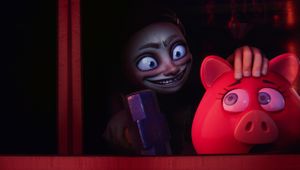
JvM Creates a Football Dynasty: “Not Just Athletes” But “Icons”

There is nothing demure about ‘Football for a New Generation’. In this campaign, the German women’s football team makes a luxurious mansion its pitch and launches itself as the future of the sport as a dynasty.
Well, if not now, then when? With the UEFA European Women's Football Championship 2025 kicking off on 2 July in Switzerland, this is the perfect timing for a big statement. Particularly because the German women's national football team is one of the most successful in the world. The numbers prove this. The team is an eight-time UEFA (Euros) winner and a double FIFA Women's World Cup winner.
The 360-degree campaign features short clips centring around the team’s success and the Google Pixel.
Felix Umbach is the creative director at Jung von Matt SPORTS and has worked with Jung von Matt Switzerland, especially with chief creative officer Christian Kies, to bring this indulgent project to life.
The birth of the German women’s football dynasty
The whole campaign started with a simple question. “How can a team with such historic success still not be seen with the recognition it deserves?” With so many international wins, the German women’s national team is one of the best in the world. “And yet,” Felix says, “the cultural spotlight has never fully reflected that legacy.” That imbalance was the creative team's starting point.

The goal was to make something chic, unforgettable, and bold. That’s when they reframed the team as “what they truly are: a modern dynasty.” Felix explained: “They are stepping out of the shadow of history to define their own identity. They’re not just athletes – they’re icons. And it was time to show them that way.”
Beyond a Google ad campaign or simply celebrating women’s football, the agency wanted to reframe the discussion entirely. Felix said, “We wanted to reimagine how it’s seen, felt, and remembered. This isn’t just a sports campaign. It’s about visibility, representation, and cultural relevance.” He adds, “These players are world-class athletes. But they’re also cultural figures, and should be seen as such. This campaign was our way of giving them that stage.”
The production behind ‘Football for a New Generation’
Because the campaign was all about redefining traditional sports expectations and advertising, the team brought creatives from outside the sports world on board. Director Nina Holmgren and photographer Tereza Mundilová added a fashion-forward perspective that gave the campaign its elevated, artful tone.
The devil is famously in the details. Every minor feature mattered to create the unified image of decadence, Felix said, “from hedge sculptures of the players to baroque frescoes with football motifs, silk scarves and V-neck pullovers, all the way to a team portrait that feels more like a royal painting.”
No masterpiece comes without its hurdles. In the case of ‘Football for a New Generation’, a rainy day almost ruined the project. CCO Christian Kies said: “We had to overturn and rethink the already very complicated master plan overnight. However, since everyone involved was convinced of the idea, no one hesitated to go the extra mile.”

Strong messaging, strong branding – Women’s football as an opportunity
Creative director Felix thinks that reframing women’s football is also a significant opportunity for brands. “Yes, visibility is emotional. But it’s also strategic. Because when people connect with women’s football, they also connect with the brands that help champion it. Not as sponsors on the sidelines, but as part of the story. That’s where creativity becomes a strategic tool – and why campaigns like this matter beyond the screen.”
Since the brief came from Google Pixel and the German Football Association (DFB), the team worked on connecting the team and the products as naturally as possible. CCO Christian Kies said: “We allowed both elements their space: the Google Pixel products and their unique features, as well as the players and their skills.”
Felix added: “From the beginning, our shared ambition was to position Google Pixel not just as a sponsor, but as a true supporter of the women’s game. Literally through the lens of the Pixel camera, and metaphorically through the tone and storytelling, we ensured the brand didn’t just frame the campaign, but became part of its message.”
That is one of the reasons the clay pigeon scene with the footballs is one of Felix’s favourites. “It captures the entire tone of the campaign in one image. It's elegant, surreal, witty, and still full of precision and skill. It also allowed us to highlight the Pixel's super high-res zoom feature in a subtle, story-driven way.”

The footballers in charge
The football stars here are not only powerful in front of the camera. Since the team wanted to show them as “bold, stylised, confident, unexpected”, they also gave the players a lot of say in how they were portrayed. Creative director Felix said: “We spent time understanding who they are — not just in terms of football, but as people. We wrote the scenes with them in mind, rather than simply casting them into prewritten roles.”
When Felix reflected on the production, the players' engagement stayed with him the most. “They weren’t just there to show up and get it done – they flew in for the shoot, stayed longer than required, and brought their own ideas to the styling. You could feel they believed in the story we were telling – and that made all the difference.”

Felix wants to see more of such authentic representation, especially regarding women’s football. “Women’s football is growing, and the interest is real. But to unlock its full potential, we have to rethink how we frame it. More visibility alone isn’t enough. We need the right kind of visibility, with stories, aesthetics, and language that resonate beyond the core football fanbase. If this campaign gets even one new person to care about women’s football — or to see it in a new light — then it’s done what we hoped it would.”















